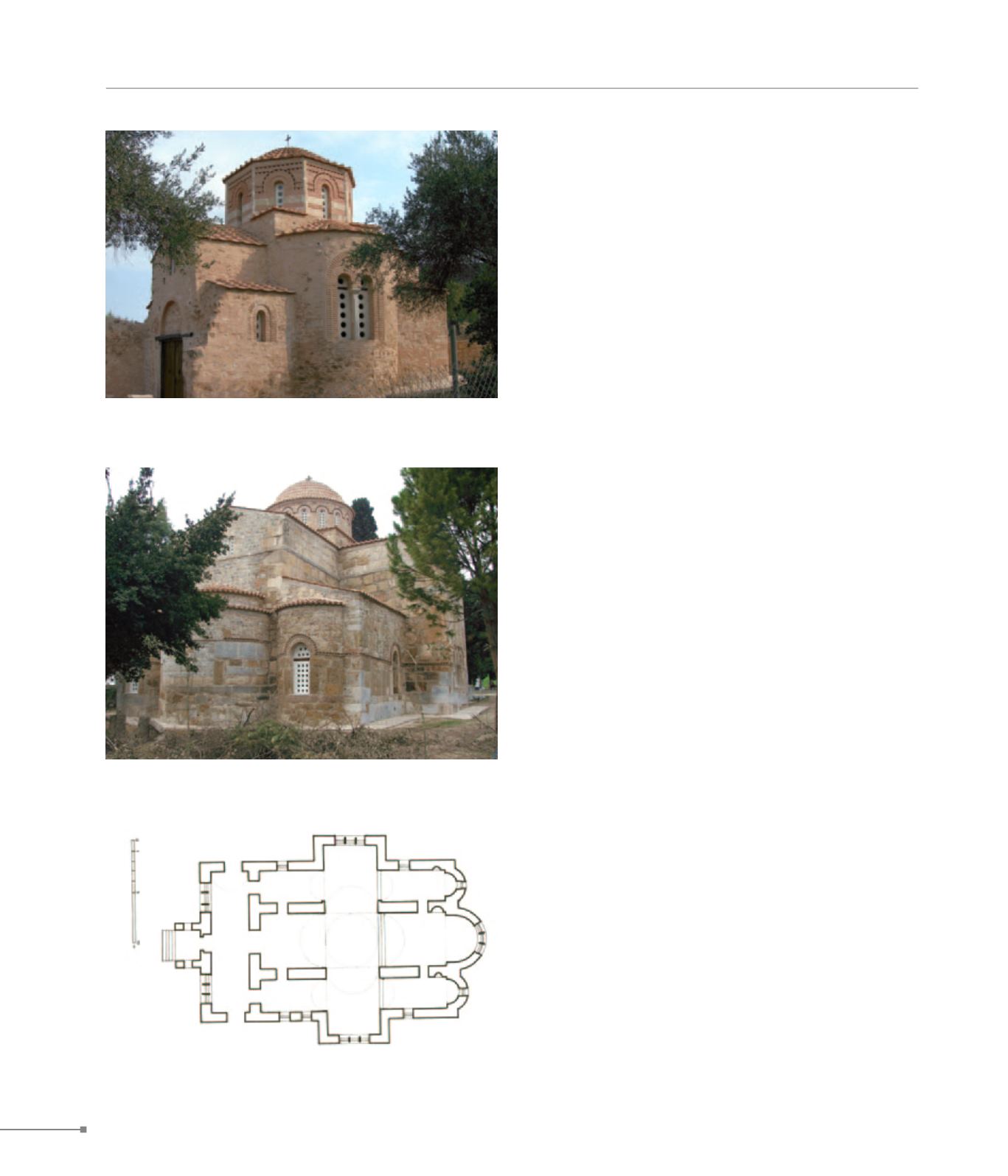
Larymna.
Orchomenos. Skripou.
CENTRAL GREECE
182
215. Orchomenos, Panagia skripou, ground plan (Ορχομενός, Παναγία
Σκριπού, κάτοψη)
215. Orrchomenos, Panagia Skripou (Ορχομενός, Παναγία Σκριπού)
211. Larymna, Saint Nicholas (Λάρυμνα, Άγιος Νικόλαος)
211.
Larymna.
At the Pazaraki site in Larymna traces of a settlement, a ba-
silica, as well as port and fortification works of the Justinian
period, have been detected. Outside the harbour town of
Larymna lies the triconch church of Saint Nicholas, possibly
the catholicon of an earlier monastery, dating from the 12th c.
Wall-paintings of the same period are poorly preserved; one
depicts Theodoros Katharinos, dedicator of the church.
212.
Hyettus.
The ancient acropolis of Hyettus in Boeotia was inhabited until
the 6th c., while inhabitation during the Mid-Byzantine period
is also possible. At the acropolis stands the aisleless, barrel-
vaulted naiskos of Aghios Athanasios with numerous ancient
spolia incorporated in the masonry; on the floor, a Late Ro-
man mosaic survives from the preceding building. In the in-
terior are wall-paintings from 1685. Around the church traces
of a stone-paved yard can be found, as well as underground
rooms from the late antiquity settlement.
213
.
Kambia.
The church of Saint Nicholas at Kambia stands 8 km NW of
Orchomenos. It is a complex octagon (12th c.), associated
with the catholicon of the Hosios Loukas monastery, whose
metochion it is. The church’s outer surfaces are constructed
in isodomic masonry. In the underground crypt wall-paintings
survive in part.
214.
Petromagoula.
There is a Frankish tower 6 km NE of Orchomenos, near the
present-day village of Pyrgos.
215.
Orchomenos. Skripou.
According to an inscription incorporated in the catholicon wall,
in 873-4 Leo, a protospatharios (high-level Byzantine court ti-
tle), established the monastery of the Koimesis of the The-
otokos at Skripou, an ancient site. This catholicon is the most


